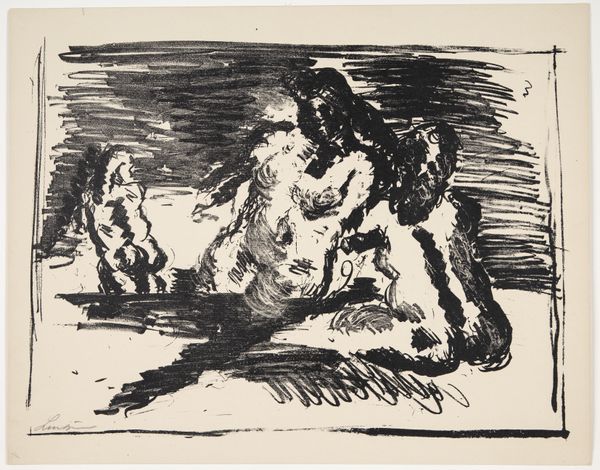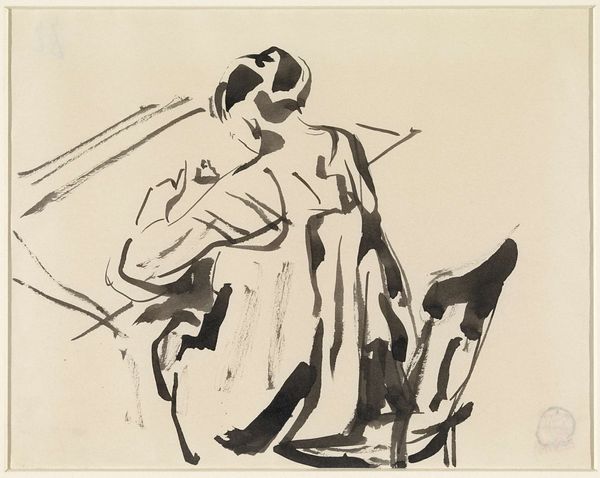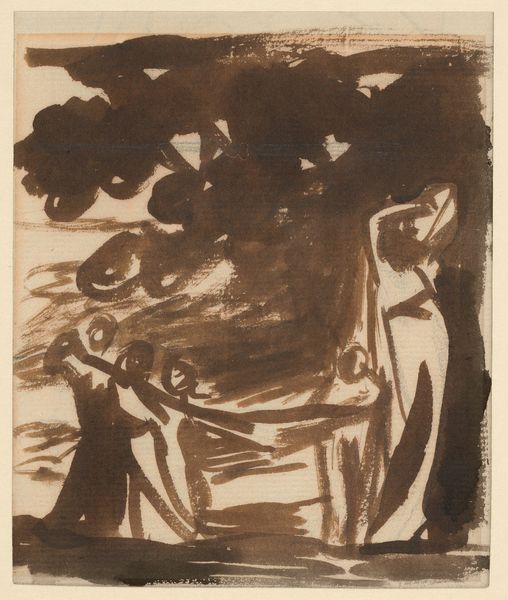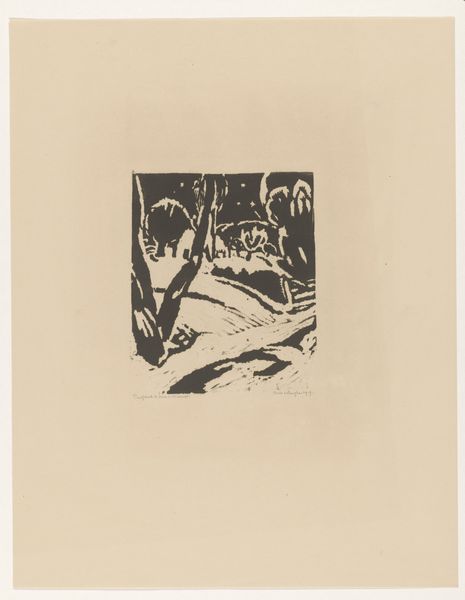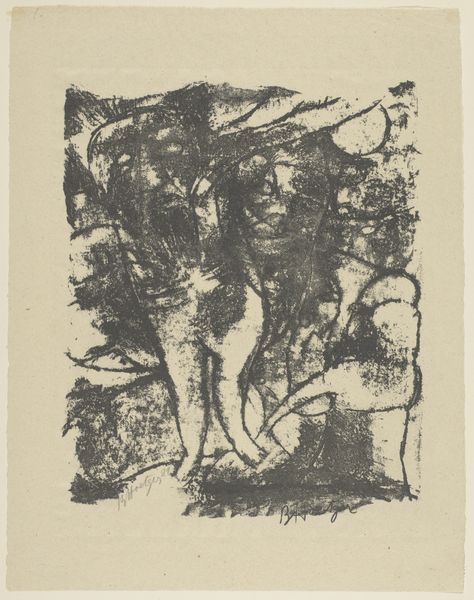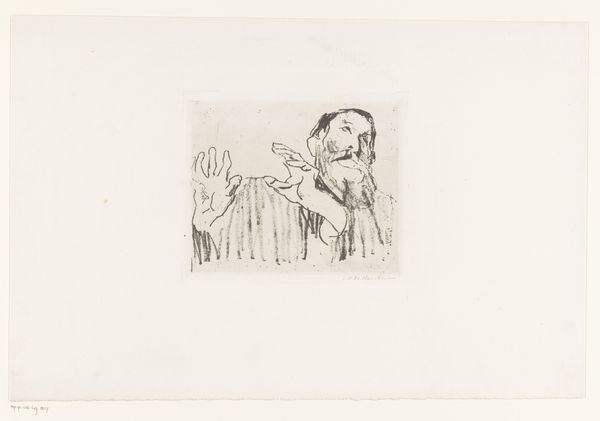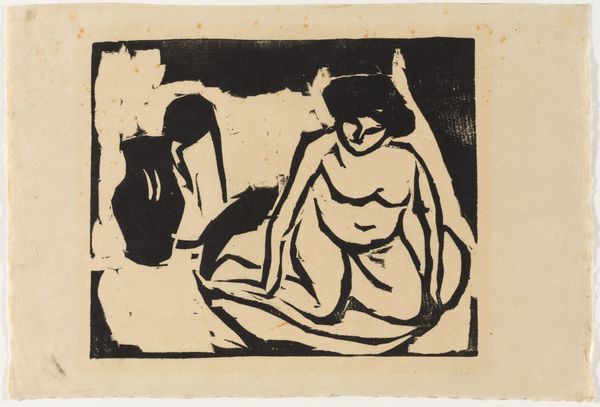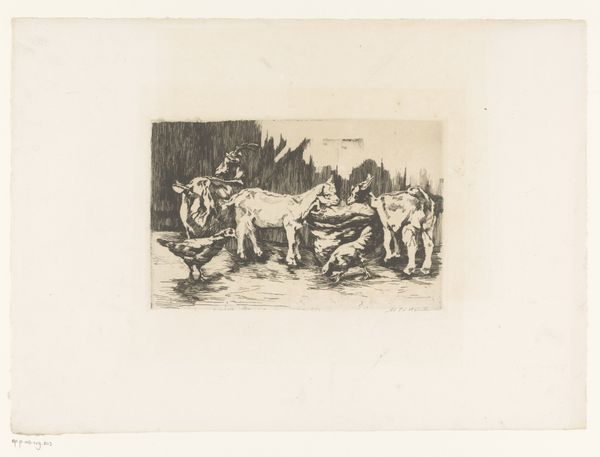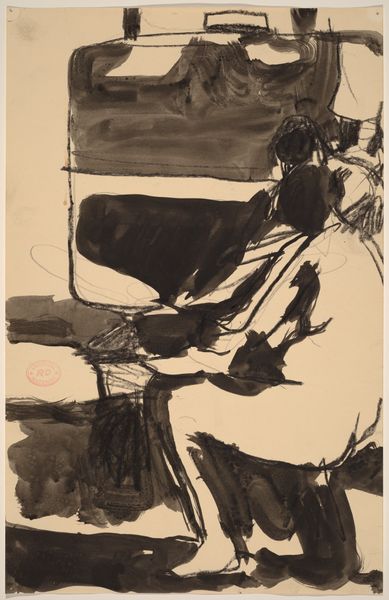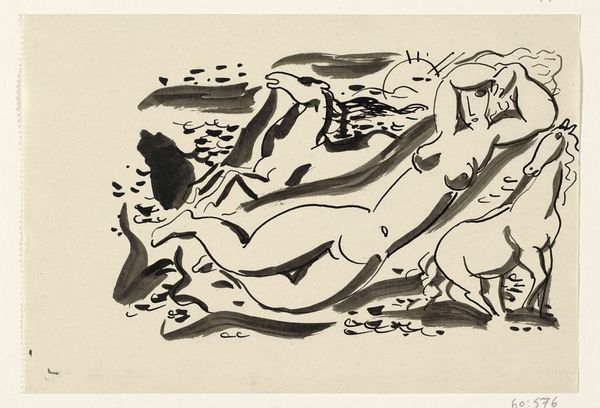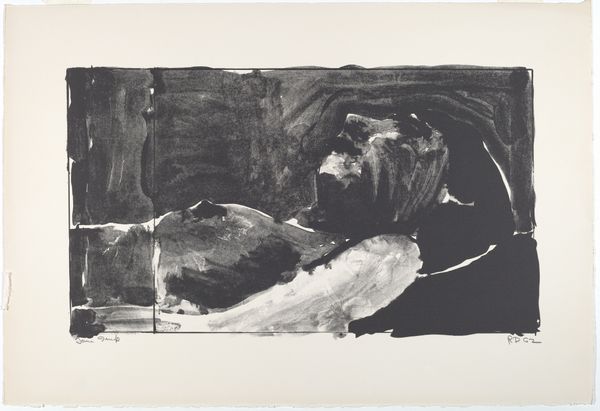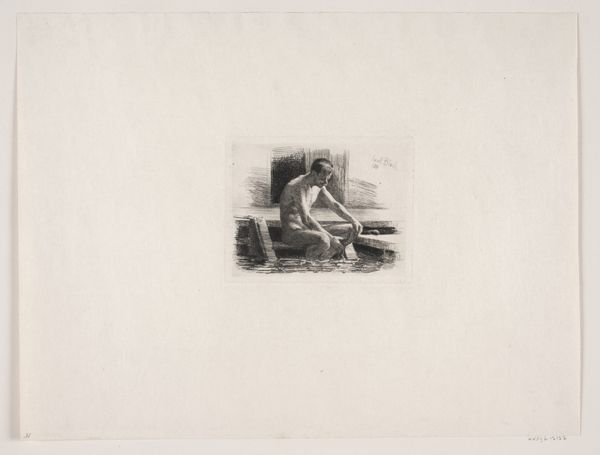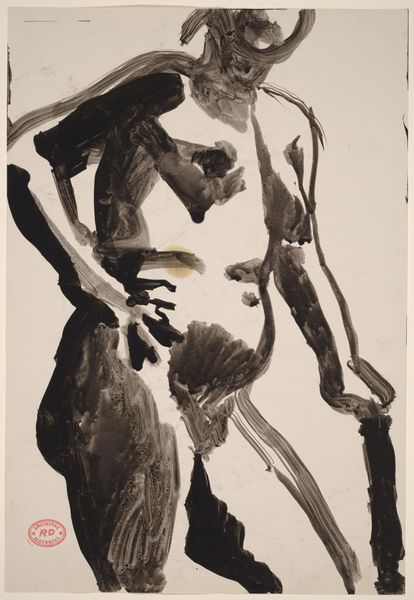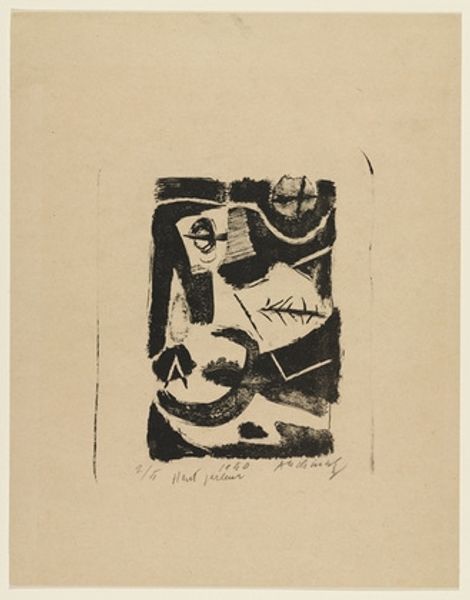
drawing, ink
#
portrait
#
drawing
#
figuration
#
ink
Dimensions: height 310 mm, width 430 mm
Copyright: Rijks Museum: Open Domain
Editor: So, this is "Study of Nel Wouters, Seated in an Armchair," created sometime between 1892 and 1916 by Rik Wouters, using ink. The bold, expressive lines create an interesting contrast between the figure and the negative space, making the composition feel simultaneously intimate and detached. What do you see in this piece? Curator: I see a representation of domesticity intertwined with the artist's personal life, which makes me think of the role of women as muses within art history and the dynamic of power embedded in these representations. Wouters depicts his wife, Nel, but it's important to ask: whose gaze are we seeing through, and what does this imply about Nel's agency? Editor: That's fascinating! I hadn’t considered the perspective that deeply. I was more focused on the sketch-like quality, and the way the posture seems relaxed, but now I see the tension you are pointing to. Is this kind of deconstruction always necessary when looking at portraits? Curator: Perhaps not "necessary," but I believe it is vital for challenging conventional understandings. By investigating the historical, social, and even political frameworks surrounding the artwork, we encourage conversations about issues that still impact society today. For instance, the artist and model relationship mirrors broader social issues concerning who has the power to represent and who is being represented. Editor: This has certainly given me a new framework for viewing portraits, understanding that a portrait is never neutral. Curator: Exactly. We are constantly decoding the artwork, seeing the visible and uncovering its deeper layers of significance. The goal isn't simply to appreciate beauty but to spark dialogues that ignite new understandings about our shared history. Editor: I'll definitely remember this approach for future analysis. Thanks!
Comments
No comments
Be the first to comment and join the conversation on the ultimate creative platform.
